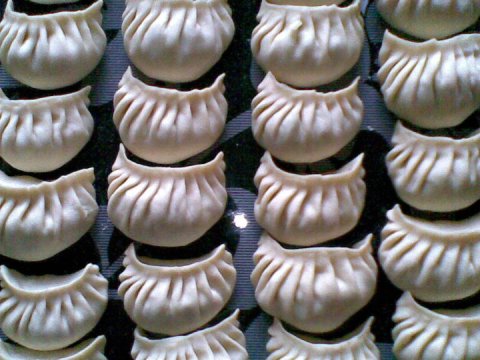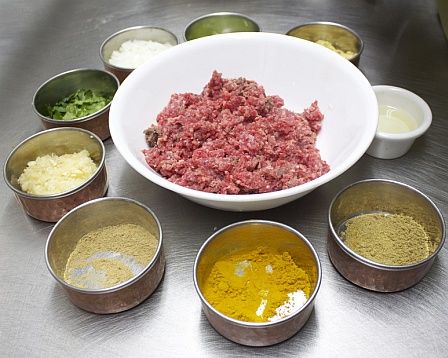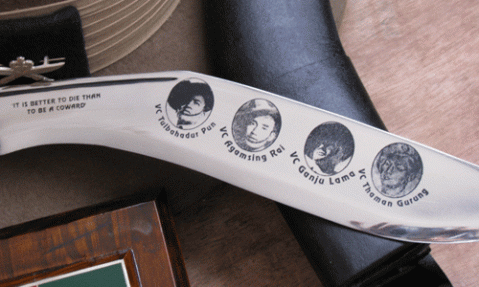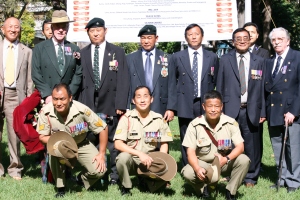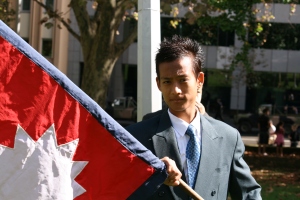MOMOS ♥
October 1, 2010 § Leave a comment
The love for momos is very deep among Nepalese. That makes me a momo lover too. Just the name of momo makes me hungry. We simply love to eat momos.
The affection for momos gets even deeper when we are living abroad. But thanks to the growing number of Nepalese restaurants in Sydney that we can treat our undying hunger for momos from time to time now.
Kathmandu is a momo city. Every kid has grown up eating momos and they never get fed up with it. Momos are available in every corner, cart and restaurants in Kathmandu.
For someone who hasn’t savored the crescent shaped juicy momos, they are Nepalese dumplings stuffed with minced meat or vegetables. It looks very much like chinese dumplings but the taste is what makes its different.
Momos are occassionaly prepared at home simply because it takes a lot of time and effort and pre-made wrappers aren’t available in the grocery stores in Nepal. And they taste so good that it’s hard to eat only a few. Here the dumpling pastry is available everywhere which is why making momos is so easy and gets ready in just a matter of time.
- Preparation Time 1 hr
- Cooking Time 15 min
Ingredients
- 2 pack of dumpling wrappers
-
1000 gm minced chicken/pork meat
-
1 cup onion, finely chopped
-
½ cup green onion, finely chopped
-
1 teaspoon minced garlic
-
1 teaspoon minced fresh ginger
-
½ teaspoon turmeric
-
1 teaspoon cumin powder
-
1 teaspoon coriander power
-
3 fresh chilies, minced
-
Salt to taste
Process – Mix all the ingredients and meat in a large bowl. Grab the wrappers and start stuffing the dumpling. Pinch and twist the pleats to ensure the stuffed dumpling are sealed properly. Once filled and sealed, the momos steam for 15 minutes and it’s ready to eat with spicy, smoking dipping tomator achar (sauce).
Some Links to Nepalese Restaurants –
http://www.himalayanchargrill.com.au/
http://www.himalayanfusioncafe.com.au/
http://www.bestrestaurants.com.au/restaurants/NSW-Sydney-nepalesekitchen.aspx
http://www.urbanspoon.com/r/70/751580/restaurant/Sydney/Nepalese-Kitchen-Surry-Hills
Khukuri
September 30, 2010 § Leave a comment
Khukuri or Kukri is a national knife of Nepal. It is common to every Nepali household and an icon of bravery and valor of Gurkha soldiers. Gurkhas are branded as the world’s finest and most feared soldiers in the world.
The potential of Gurkhas were first realized by the British, during the Gurkha War (1814-1816) between the East India Company and the Gurkha Empire, when they suffered heavy casualties. Khukuris received first attention during the Gurkha war and it continued through World War I and World War II.
Ex British Army Major Bhola Bahadur Rai who is working in the Australian Army force for the last 13 years says Gurkhas were one of the many troops who fought along with ANZACS against the Turkish force. Every year Gurkhas and their descendants proudly take part in the ANZAC day parade throughout Australia to honor the bravery of soldiers who fought in the wars.
The Gurkhas and Khukuri has become an inseparable identity. Even today each Gurkha soldier carries a Khukuri with him in uniform and in the battle. The demand and popularity of Khukuris is growing everyday in the world today. There are many well established Khukuri sellers run by Ex-Gurkhas in Nepal and online exporters are growing at the same rate.
The history of Khukuri goes back to more than 500 years. The National Museum of Nepal (Kathmandu) displays the oldest knows Khukuris from 1559 AD.
Khukuri is a semi-curved knife. The Khukuri blade is made of steel and suspensions (springs) of old heaving vehicles. The handle is made of rosewood, walnut wood, water buffalo horn. For a special and fancy handle, metals such as aluminum, brass and ivory and rhino horn are also used.
They are carried in scabbard which usually has two pockets for “chakmak” and “karda”. Chakmak is blunt steel for sharpening the blade and karda is a small sharp utility knife.
Though Khukuri is world famous as a lethal fighting weapon, it is still a multipurpose knife for rural Nepalese population. They used Khukuri for cutting grass, chopping wood, peeling vegetables, slaughtering animals, and skinning meat. Many also kept Khukuri to ward off dangerous animals and the occasional human invader.
Growing Nepalese Media in Australia
September 30, 2010 § Leave a comment
The number of ethnic Nepalese media is increasing with the steady rise of Nepalese population in Australia. But their long term sustainability is a bigger concern when most of them are self-sponsored and a voluntary work.
The growth of Nepalese media is a recent development in Australia. The media related people who came to Australia as recently as 2005 were less than five in number, says the editor of a Nepalese magazine in Sydney, Bharat Raj Poudel. “Today there is at least 60 of them and most are radio journalists.”
Most of these people are working in print, online and radio broadcasting. The two monthly magazines published in Sydney are The Nepali Australian Times and Nepali Patra. Likewise, SBS Radio Nepali, Himalayan Radio, Nepali Aawaj 98.5 and North shore FM are four radios operated in Sydney alone.
Most of these media run through individual funding. Nepali Aawaj is launched by four passionate radio lovers. They share $ 100 air cost per single spot to run an hourly program. Arjun Mani Poudel of Nepali Aawaj says they record their program at the Burwood station which is aired through Radio2000fm 98.5, a multilingual community broadcasting service in Sydney.
Besides Sydney, Nepalese radios are operated in Perth, Melbourne and Brisbane. The online radios are equally gaining popularity. The most popular ones in Sydney are Radio Jhatka, Hamro Sydney and Namaste Sydney. Many of these online radios use software like cool edit and produced from home.
Coming to the online media, nepalaustralianews.com, australianepal.com and nepalitimes.com.au are the three major players. Krishna Tiwari who writes online news says it’s difficult to stay apart from journalism once you are into it. “Almost all media workers from Nepal have been engaged in one or another form of media in Australia.”
“As most of these media are non-profit and distributed freely, the issue of long term sustainability is the key concern. Obviously those people running it have other jobs to keep aswell. Their contribution depends largely on how free they are,” says Mahendra Kumar Lamsal, publisher of The Nepali Times Australia. “Our magazine depends highly on advertisements which is just enough to cover the design, graphic, printing and distribution cost.”
“There are three additional newspapers and more online news websites waiting for its launch,” says Mr. Poudel. ” The doubt about how long these media can sustain in the future is undeniable but the market still looks promising if they were to operate more commercially,” says Mr. Arjun.
Shattered Dream
September 29, 2010 § Leave a comment
The charm of international degree has appealed thousands of Nepalese students in going overseas every year. But lately the political instability and unemployment in Nepal became the major drive for many to leave home.
Tens of thousands of Nepalese students came to Australia in the past three years. According to the Australian Education International (AEI), 24,579 Nepalese students were enrolledn in 2009 alone with a growth of 36 percent in 2008. Of which more than half are enrolled in VET (Vocational and Educational Training) courses.
Lured by the prize of Australia’s skilled migration program, majority of them came with the understanding that enrolling in vocational courses like cookery, hairdressing and community welfare would easily earn them a permanent residency.
As a skilled migration program, the Australian government allowed international students who were studying trade courses to apply for permanent residency in 2005.
A nexus of agents and colleges also took advantage of the system when permanent residency was linked with Australian education. Hundreds of dodgy colleges sprang out across the capital cities to cater the flooded pool of migrants. In effect, a number of Nepalese students undertaking vocational courses sky-rocketed in Australia.
But the recent changes in immigration policy that came into effect in July 1 has scrapped most vocational trades like cookery and hairdressing from its skill priority list making it harder for students with those qualifications to gain permanent residency.
In doing so the Australian Government wants to discourage overseas students from coming to Australia only on the ground of securing residency. There were more than 15 doggy colleges that were shut down lately who were operating as visa factories. But students are still the ones to lose the most from these changes. Many came to Australia by mortgaging their homes and taking hefty bank loans. They spent thousands of dollars over meaningless courses in exchange of residency.
The Australian government has granted students with 18 months visa after graduation to work and seek sponsorship from employers to ease the problems the recent changes could have caused to existing students.
Many students are returning home. Most are changing courses to meet the criteria for new migration rule. Govinda Sharma, a migration agent based in Sydney says, “Some are applying for bachelor degree, many are repeating diplomas while few are opting for Canada. But almost all of them who comes to my consultancy are going for cheap colleges,”
Associate and Migration Agent Shamser Singh Thapa of Simon & Diab Associates says students are to blame mostly for inviting this situation for themselves. They didn’t do their homework well before they came to Australia. “Everyone was after a whim of residency that even a MD and Engineers came to study for Certificate III cookery.”
There is a big question mark as whether these students who are changing their courses are going to a geniune college , Mr. Thapa added. “Many business colleges in the market are still designed for permanent residency offering cheap bachelor courses in business and accounting. The sustainability of these courses is very doubtful.”
According to the July 2010 Australian Education International‘s record, Nepal is Australia’s 7th biggest source country for international students which is a $15 billion industry after coal and iron.
Listen
